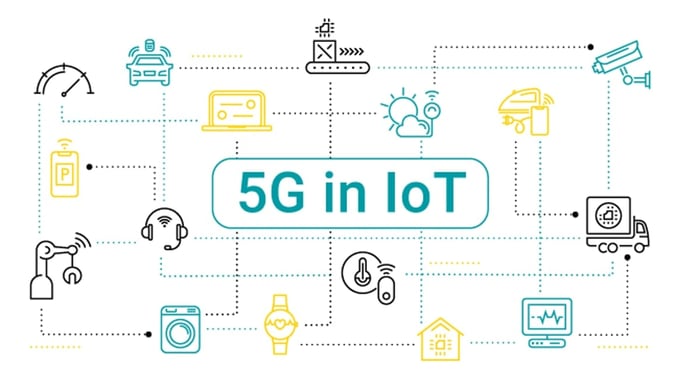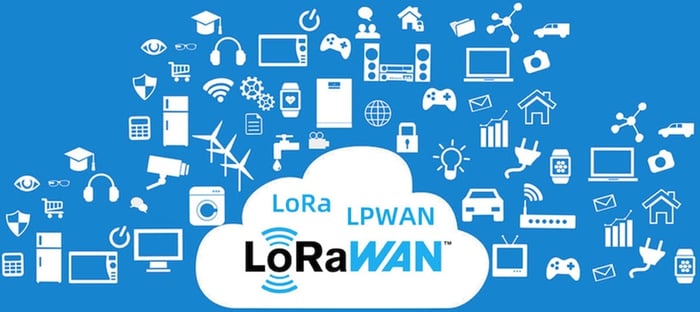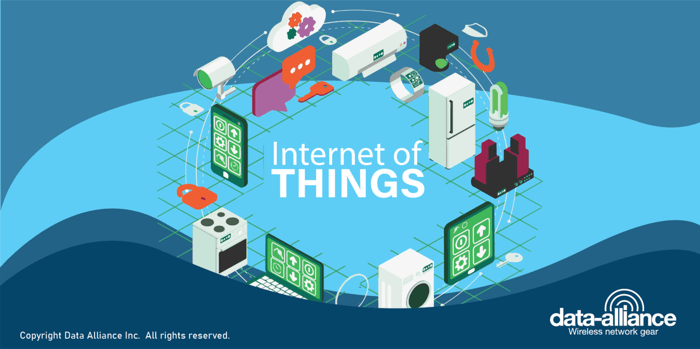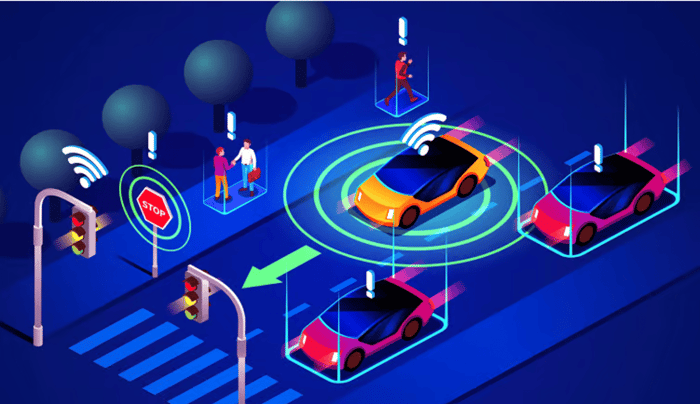Antennas, Antenna Cables, Wireless Products: Technical Articles
Next-Gen Antenna-Based Wireless Technologies
Table of Contents
Wireless Technologies that are Antenna Based
In this article, we will discuss the trends of antenna-based wireless technology for 2023 and 2024.
Wireless technology has revolutionized the way we live, work, and communicates. From laptops to Smartphone, from smart homes to smart cities, wireless technology has become an integral part of our daily lives. The importance of wireless technology lies in its ability to connect people and devices in real-time, regardless of location. It has created new opportunities for businesses across the globe.
Antenna Based Wireless Technologies
The top antenna based wireless technologies:
- Drone Technology
- 5G Technology
- WI-FI6/6E
- LoRaWAN
- Bluetooth
- ZIGBEE
- IOT Technology
- LI-FI Technology
- Satellite Internet Technology
- Vehicle-to-everything (V2X) communication technology
1] DRONE TECHNOLOGY
Drones technology, also known as unmanned aerial vehicles (UAVs), has rapidly evolved in recent years, and it has opened up new applications and markets. Drone manufacturing is a growing industry with vast potential for growth in the coming years. Drone antennas are critical components for the proper functioning of drones as they transmit and receive data between the drone and the remote controller.
The drone antenna manufacturing industry has a massive potential for growth as the demand for drones in various industries continues to increase. Companies that invest in drone antenna manufacturing can benefit from this growing demand and tap into this lucrative market.
Market trends for Drone technology
- In terms of market trends, the global drone market is expected to grow significantly in the coming years. According to a report by Marketsand Markets, the drone market is expected to reach $45.8 billion by 2025, growing at a CAGR of 20.5% from 2020 to 2025.
2] 5G-TECHNOLOGY
Wireless communication has seen tremendous growth in recent years, and 5G technologies are the next big thing. It is the fifth generation of wireless technology, offering faster speeds, higher bandwidth, and low latency. 5G technologies use small cells that can be installed on light poles, buildings, and other infrastructure to provide coverage in specific areas.
 5G antenna manufacturing is suitable for regions such as the United States, South Korea, China, and Japan, where 5G technologies are widely adopted.
5G antenna manufacturing is suitable for regions such as the United States, South Korea, China, and Japan, where 5G technologies are widely adopted.
In 2023 and 2024, we can expect to see the following market trends and projections for 5G technology:
- Increased adoption of 5G-enabled devices
- Deployment of 5G infrastructure
- Emergence of new 5G applications
According to a report by Markets and Markets, the 5G market is expected to reach $667.9 billion by 2026, growing at a CAGR of 30.0% from 2020 to 2026.
3] Wi-Fi 6/6ETECHNOLOGY
Wi-Fi6/6E technology is the latest version of Wi-Fi technology, which operates in the frequency range of 5.925-7.125GHz. It is an extension of the 5G wireless technology that provides faster data transmission rates and lower latency. There are various types of antennas used in Wi-Fi 6/6E technology, and the type of antenna used depends on the specific application and environment.
Market trends for Wi-Fi 6/6E technology
- The demand for Wi-Fi 6 is being driven by the increasing adoption of IoT devices, the need for faster and more reliable connectivity, and the growing number of smart city initiatives. According to a report by Markets and Markets, the Wi-Fi 6 market is expected to reach $18.2 billion by 2026, growing at a CAGR of 27.9% from 2021 to2026.
4] LoRaWAN:
LoRaWAN is a low-power wide-area network (LPWAN) technology that is used for Internet of Things (IoT) applications. LoRaWAN uses antennas to communicate wirelessly over long distances and is designed to below-power and cost-effective. LoRaWAN technology requires antennas that are designed to operate in the 863-870 MHz and 902-928 MHz frequency bands. LoRaWAN antennas need to be capable of supporting long-range communications with low power consumption.
 Market trends for LoRaWAN technology:
Market trends for LoRaWAN technology:
- In 2023 and 2024, it is expected that LoRaWAN technology will continue to gain traction and become more widely adopted, particularly in industries that require low-power, long-range connectivity for IoT applications.
5] Bluetooth 5
Bluetooth 5 is the latest version of the Bluetooth wireless technology and uses antennas to transmit and receive data over short distances. Bluetooth 5 has improved range and data rates compared to previous versions.
Bluetooth 5 technology requires antennas that are designed to operate in the 2.4 GHz frequency band. Bluetooth antennas need to be capable of supporting fast data transfer speeds, long-range connectivity, and low power consumption
Market trends for Bluetooth 5 technology:
- In 2023 and 2024, it is expected that Bluetooth 5 technology will continue to gain traction and become more widely adopted, particularly in the consumer electronics and healthcare industries. According to a report by Markets and Markets, the global Bluetooth market is expected to grow from $4.9billion in 2020 to $9.2 billion by 2025, at a CAGR of1 3.2% during the forecast period.

6] Zigbee:
Zigbee is another LPWAN technology that is used for IoT applications and uses antennas to communicate wirelessly over short distances. Zigbee is designed to be low-power and low-cost. Zigbee technology requires antennas that are designed to operate in the 2.4 GHz frequency band, which is also used by other wireless technologies such as Wi-Fi and Bluetooth.
Market trends for Zigbee technology:
- According to a report by Markets and Markets, the global Zigbee market is expected to grow from $7.5 billion in 2020 to $13.8 billion by 2025, at a CAGR of 12.9% during the forecast period.
7] IoT Technology
By utilizing IoT technology, it is possible to connect various applications. Home applications such as air conditioning units, lighting fixtures, door locks, thermostats, security alarm systems, and many others, into a unified system. Also, there are many different Industrial IoT applications like IoT Asset Tracking, Agricultural IoT, IoT Water Monitoring, IoT Supply Chain Management or fully automated Smart Factories. IoT antennas are used in Internet of Things (IoT) devices to enable wireless communication.
Market trends of IoT technology
- According to a report by IoT Analytics, there is an estimated 18% increase in the number of IoT devices, reaching 14.4 billion by 2023, and this figure could potentially rise to 27 billion by 2025. The growth is predicted to be propelled by the replacement of 2G/3G wireless networks with 4G/5G networks, which is one of the trends expected to drive IoT device adoption in2023.
8] LI-FI TECHNOLOGY
Li-Fi technology operates by utilizing a light antenna to modulate visible or infrared light signals at extremely high speeds that are beyond human perception.
Market trends of Li-Fi technology
- The Li-Fi market is expected to drive growth at a compound annual growth rate (CAGR) of 51% from 2022 to 2030. Li-Fi technology is still in its early stages of development, but it is expected to have significant growth potential in emerging markets such as Asia Pacific and the Middle East, where the demand for high-speed data transfer is increasing rapidly.
9] SATELLITE INTERNET TECHNOLOGY
This technology will require advanced antenna designs to enable high-speed data transmission over long distances as companies such as SpaceX and Amazon are working on providing high-speed internet access via a network of low-earth orbit (LEO) satellites.
Satellite internet technology is an emerging market that is expected to see significant growth in the coming years. Advancements in satellite technology, including improvements in antenna design and signal processing, are expected to improve the performance and reliability of satellite internet services.
Market Trends in Satellite Internet Technology
- With the growing demand for high-speed internet access, particularly in rural and remote areas where traditional wired and wireless internet options are limited, satellite internet technology is becoming an attractive option. Governments around the world are investing in satellite internet technology to improve connectivity in remote and underserved areas. For example, the US government has launched the Rural Digital Opportunity Fund (RDOF) to provide funding for rural broadband expansion, including satellite internet.
10] Vehicle-to-Everything (V2X) Communication Technology

Vehicle-to-everything (V2X) communication technology is a wireless communication system that enables vehicles to communicate with other vehicles, infrastructure, and devices. V2X technology uses a combination of short-range wireless communication, such as Wi-Fi or Bluetooth, and cellular or satellite communication to enable communication between vehicles and other entities.
V2X technology can be categorized into two types of communication: Vehicle-to-Vehicle (V2V) and Vehicle-to-Infrastructure (V2I).V2V communication enables vehicles to communicate with other vehicles, while V2I communication enables vehicles to communicate with infrastructure, such as traffic lights, road signs, and other roadside equipment.
Market Trends of Vehicle-To-Everything (V2x)
- Vehicle-to-everything (V2X) communication technology is an emerging market that is expected to see significant growth in the coming years. Advancements in V2X technology, including improvements in antenna design, signal processing, and cyber security, are expected to improve the performance and reliability of V2X systems, making them more attractive to automakers and consumers.
Antenna Cable Considerations
Wireless communication heavily relies on antennas to transmit and receive signals. But how do these antennas connect to the devices they serve? Here's where antenna cables come in.
Antenna Cable and Adapter Types:
There are various antenna cable connector types, each with its own application:
- SMA (Subminiature A): A common connector for many antenna applications, including Wi-Fi and cellular antennas for drones and routers.
- RP-SMA (Reverse SMA): Similar to SMA but with a reversed pin and thread for polarity distinction. Often used in Helium Network Hotspots.
- U.FL (Ultra-Miniature Flexible Coaxial): A compact connector suitable for space-constrained applications like GPS antennas.
- MMCX (Micro-miniature Coaxial): Another miniature connector type used in some antenna applications.
Choosing the Right Cable:
It's crucial to choose an antenna cable with a connector that matches both the antenna and the device. Most antenna manufacturers specify the compatible cable type in their product descriptions.
Adapters and Extensions:
- Adapters: In situations where the antenna and device have different connector types (e.g., RP-SMA antenna and SMA device port), adapters like SMA to U.FL Cables or RP-SMA to U.FL Cables can bridge the gap.
Extension Cables: If you need to position the antenna further away from the device, extension cables (e.g., SMA Extension Cable, RP-SMA Extension Cable) are available in various lengths to maintain a strong signal connection.
Conclusion:
In conclusion, Drones technology and 5Gtechnology are game-changers in the world of wireless communication. Its potential impact on various industries is significant, and we can expect to see rapid growth and adoption in the coming years. As a company manager or investor, it is important to keep an eye on market trends and projections for Drones/5G technology and consider investing in companies that are at the forefront of this technology.
The wireless technology industry is rapidly evolving, with new and innovative antenna technologies being developed every day. Investors who want to stay ahead of the curve should consider investing in one or more of the top 10 antenna technologies listed above, depending on their specific needs and goals. By investing in these technologies, investors can position themselves for long-term success in the wireless technology industry.
FAQs
What are antenna-based wireless technologies?
Antenna-based wireless technologies are communication systems that rely on antennas to transmit and receive data without physical cables. These technologies enable connectivity across a wide range of applications — from smartphones and drones to IoT devices and smart cities.
Why are antennas critical for wireless communication?
Antennas are essential because they serve as the interface between the electronic circuitry of a device and the airwaves that carry wireless signals. The design, frequency range, and placement of antennas directly impact the strength, range, and reliability of wireless communication.
Which are the top antenna-based wireless technologies today?
The leading antenna-based wireless technologies include Drone Technology, 5G, Wi-Fi 6/6E, LoRaWAN, Bluetooth, Zigbee, IoT, Li-Fi, Satellite Internet, and Vehicle-to-Everything (V2X) communication. Each serves specific use cases, from long-range IoT networks to high-speed mobile data.
What are the market trends for 5G and Drone technologies?
5G is projected to reach a market value of $667.9 billion by 2026, driven by faster speeds, low latency, and global infrastructure expansion. The drone market, valued at $45.8 billion by 2025, continues to grow rapidly as drones find applications in logistics, agriculture, and surveillance.
What is the role of IoT and LPWAN technologies like LoRaWAN and Zigbee?
IoT connects devices and systems to exchange data autonomously, while LPWAN technologies like LoRaWAN and Zigbee support long-range or low-power communication. These are especially important for industrial monitoring, agriculture, asset tracking, and smart city deployments.
How does Li-Fi differ from traditional Wi-Fi?
Li-Fi uses light waves (visible or infrared) instead of radio waves to transmit data. This enables extremely high-speed communication without interference, though it requires a clear line of sight. The Li-Fi market is expected to grow at a CAGR of 51% from 2022 to 2030.
What is the importance of antenna cables and connectors?
Antenna cables and connectors (such as SMA, RP-SMA, U.FL, and MMCX) ensure efficient signal transmission between antennas and devices. Choosing the correct cable type and connector ensures optimal performance and compatibility for applications like drones, routers, and IoT systems.
How can businesses benefit from investing in wireless antenna technologies?
Companies that invest in antenna-based wireless technologies position themselves at the forefront of connectivity innovation. From enabling smart infrastructure to improving industrial automation, these technologies offer long-term growth potential across multiple sectors.







